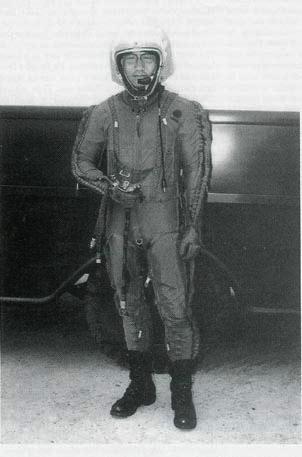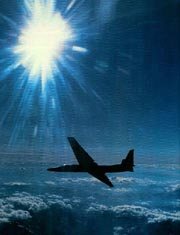
ROCAF U-2 OPERATIONS
 |
 |
| M/ G Jude BK Pao, ROCAF (Ret) |
Gen Hsichun Mike Hua, ROCAF (Ret) |
During 15-years of reconnaissance operations code-named
Project Razor, ROC pilots flew 102 missions that penetrated the bamboo curtain,
including overflights over North Korea and Northern Indochina. Surface-to-air
missiles shot down five U-2s over Mainland China. Three ROC pilots were killed,
two taken prisoner.
During this same period, American U-2s penetrated Soviet airspace twenty-four
times. One aircraft was lost. No one was killed. Combined, ROC and American U-2
operations lost seven pilots in routine training flights and coastal patrol
missions. This Black Cat site is intended to honor and provide recognition to
our ROC Roadrunners. The contributions made to this site by generals Pao and Hua
are commendable and greatly appreciated.

From 1959 to 1971, 30 ROCAF pilots were sent to US to receive training on U-2.
Twenty-seven of them completed their training. The first two U-2Fs were
delivered to the ROCAF in July 1960, another two in December 1962. In December
1964, Article 342 replaced 359 until 359 returned to Taoyuan in late spring,
1965. Article 348 (U-2G) was ferried to Taoyuan around June, 1964, and flown by
Lockheed pilot, Bob Schumacher, as well as the Chinese and CIA pilots on hand in
a test program to cure a flameout problem that had developed after a new fuel
control had been installed in all the aircraft a few months earlier.
 |
The N801X tail number remained on it the whole time it was at
Taoyuan. Article 359 operated out of Taoyuan for most of 1964 before being
delivered back to the U.S. for a dorsal canoe modification.. Article 359
returned to Taoyuan in mid 1965 and remained through December, 1965. Article 372
was first aircraft deployed to Taoyuan in "Black Velvet" finish. All
the earlier planes were "midnight" blue. On 19 March 1961, pilot Yao-Hwa
Chih was killed when his aircraft veered of the runway and burned during take
off from Taoyuan on a night flight training.
9 September 1962, Huai-Sheng Chen took off from Taoyuan at 0600 for a mission on
military deployment in Jiangxi region in U-2C "378". He was shot down
by SA-2 fired by PLAAF 2nd Surface-to-Air Guided Missile Battalion over
Nanchang. Chen was alive when he was found but died at the hospital.
 |
1 November 1963, Chang-Di Yeh flew a mission on nuclear
weapons facility in northwestern China where he was shot down by SA-2 fired by
PLAAF 2nd Surface-to-Air Guided Missile Battalion over Jiangxi. He was captured
alive by the Chinese Communists and not released to Hong Kong until November 10,
1982.
23 March 1964, Te-Pei Liang was flying a photo training over Taiwan when his
aircraft lost control due to improper handling. Liang ejected but was drowned.
7 July 1964, Nan-Ping Lee took off from NAS Cubi Point, Philippines on a mission
on China's supply lines to North Vietnam. He was shot down by SA-2 fired by
PLAAF 2nd Surface-to-Air Guided Missile Battalion over Fujian and was killed
when his ejection seat failed to fire because of it not being armed.
14 August 1964, Shih-Li Sheng survived the crashed his aircraft on a training
mission near Boise, Idaho, USA.
19 December 1964, Shih-Li Sheng was on a training mission from Davis-Monthan AFB
when he lost control while climbing through thunderhead. The aircraft crashed
and though Sheng survived, he was forced out of the U-2 program. He was killed
in a crash some years later.
10 January 1965, Li-Yi Chang departed from Taoyuan and was shot down in Inner
Mangolia by missiles fired by PLAAF 1st Surface-to-Air Guided Missile Battalion.
Chang was captured alive and not released until November 10, 1982.
22 October 1965, Cheng-Wen Wang was flying a photo training over Taiwan when his
aircraft is believed to have lost control due to improper handling. The pilot
remains missing and is presumed dead.
17 February 1966,Tsai-Shi Wu was undergoing a high-altitude photo training.
After shutting down the engine, he got an overtemp warning. In an attempt to
land on the divert field in CCK, he landed on the wrong airstrip. The airstrip
was too short, causing the aircraft to overshoot the runway during forced
landing and crash into civilian housing. The pilot and five civilians perished.
22 March 1966, Hung-Di Fan lost his U-2 when ejected from his first training
flight.
21 June 1966, Ching-Chang Yu was on a long-range, high-altitude flight training
when the engine flamed-out due to ruptured fuel supply line. He then attempted
an unsuccessful forced landing in Okinawa. He bailed out but died of wounds
sustained.
8 September 1967, Jung-Bei Huang was flying over the Jiangsu province, Shanghai,
and Hangzhou when he was shot down and killed by Chinese-made Red Flag 2 by
PLAAF 14th Surface-to-Air Guided Missile Battalion over Jiaxing.
16 May 1969, Hsieh Chang was killed during a mission along Hebei seacoast where
his aircraft lost control approximately 100nm south of Cheju Island, ROK.
24 November 1970, Chi-Hsien Huang crashed and perished during take-off and
landing training in Taoyuan.
© Copyright 2001-, Dreamland Resort. All rights reserved. See a broken link or error - please email the webmaster. Page last modified 01/29/2022














